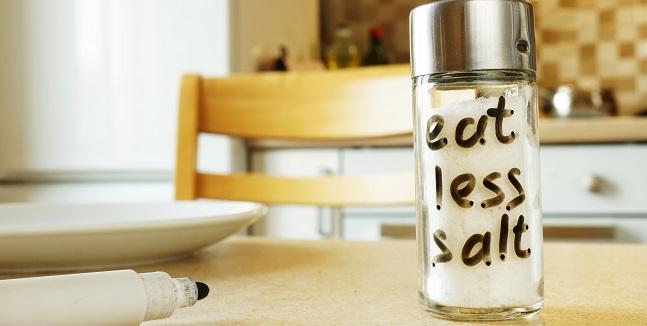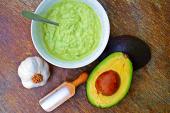The Lower the Sodium, the Better for BP: Updated Meta-analysis
An analysis of 85 trials supports cutting dietary salt in both hypertensive and normotensive people, but debate will go on.

The tight dose-response relationship between dietary sodium consumption and blood pressure is roughly linear across all levels of intake, with no signs of a leveling off at the upper or lower ends of consumption, according to a new meta-analysis confined to experimental studies.
Reductions in sodium consumption down to as low as 1.0 to 1.5 g/day were associated with declines in BP. Stronger relationships were seen in patients with hypertension, although similar trends also were seen in normotensive individuals, who had “smaller but still important” falls in BP, researchers report.
Senior author Marco Vinceti, MD, PhD (University of Modena and Reggio Emilia, Modena, Italy), told TCTMD that recommendations to limit sodium intake to 1.5 to 2 g/day from US and European groups, “in our opinion, are wise compared to our findings because even if you don’t have high blood pressure you still have a benefit of controlling your sodium intake.”
The findings, with lead author Tommaso Filippini, MD (University of Modena and Reggio Emilia), were published online February 15, 2021, ahead of print in Circulation.
Commenting for TCTMD, Kirsten Bibbins-Domingo, MD, PhD (University of California, San Francisco), said the results of the meta-analysis aren’t surprising given the fact that trials over the decades have supported a dose-response relationship between BP and the amount of sodium people take in. The meta-analysis is useful, however, to reaffirm that the association is stronger in people with hypertension or higher background levels of consumption, she said.
But, she pointed out, the study does not directly address the main area of controversy when it comes to sodium intake—whether CVD and mortality risks are increased when consumption drops to very low levels. “Unfortunately that debate in this field has gotten polarized by people really putting their nickel down on very extreme positions of sodium consumption, so very low sodium consumption, for example.”
Bibbins-Domingo urged people to step away from that back-and-forth when thinking about the issue. “What I would like readers to take away from this paper is that there is benefit to eating slightly less salt than you’re eating now. It will help you to lower blood pressure. It will help you if you are normotensive. It will help you particularly if you’re hypertensive. And that’s an important message given how poor our blood pressure control is in the US.”
New Statistical Method
For their analysis Filippini and colleagues applied a newer method known as a one-stage cubic spline mixed-effects model that they’ve previously described. In the current paper, the technique was employed to evaluate the relationship between sodium intake and BP in a meta-analysis of 85 trials that had at least 4 weeks of follow-up; 24-hour urinary sodium excretion measurements; sodium manipulation achieved through dietary change, supplementation, or both; and measurements of systolic and diastolic BP at beginning and end of treatment.
The studies, which included more than 10,000 participants, were published between 1973 and 2018, with follow-up ranging from 4 weeks to 3 years. Most of the trials (65) were conducted in patients with hypertension, although 11 involved normotensive individuals and nine a combination of the two groups.
The overall pooled analysis showed an “approximately linear relationship” between achieved sodium intake and mean systolic and diastolic BP, Filippini et al report. Every 1-g/day decrease of sodium excretion was associated with average systolic and diastolic BP readings that were lower by 2.42 and 1.01 mm Hg, respectively.
Relationships were stronger in trials that tested sodium intake modification through dietary changes rather than supplementation, as well as in hypertensive patients. Even in normotensive individuals, lower sodium intake was tied to lower BP, although there was little evidence of an association among those who consumed less than 2 g/day.
Notes of Caution
Niels Graudal, MD (Copenhagen University Hospital Rigshospitalet, Denmark), who has studied this issue but was not involved in the current study, questioned the authors’ conclusion that the expected reduction in BP with lower dietary sodium intake in normotensive people is “still important.”
What I would like readers to take away from this paper is that there is benefit to eating slightly less salt than you’re eating now. Kirsten Bibbins-Domingo
Based on the current findings, the effect of reducing sodium by 1 g/day in the normotensive population is a BP decline of about 1.0/0.42 mm Hg, or a mean BP effect of around 0.6 mm Hg. With an average sodium intake in the United States of 3.5 g/day, reducing consumption to 1.5 g/day—the ideal limit recommended by the American Heart Association (AHA)—would achieve a mean BP decline of just 1.2 mm Hg, Graudal said.
And that would be accompanied by potential harm, he indicated, pointing to “activation of the renin-angiotensin-aldosterone system, activation of the sympathetic nervous system, and an increase in serum cholesterol and triglycerides” when intake goes below 2 g/day. “Thus, the prize for a very small BP benefit is very significant side effects,” he wrote in an email to TCTMD. “This may be the reason why a sodium intake below 2 g in many population studies is associated with an increase in mortality,” he said, concluding that “advice to reduce sodium intake to below 2 g is not wise.
Filippini et al point out that the results of the meta-analysis jibe with recommendations to limit sodium intake to between 1.5 and 2.3 g/day from a variety of professional groups, including the US National Academies of Sciences, Engineering, and Medicine, the European Food Safety Authority, the World Health Organization, the AHA, and the European Societies of Cardiology and of Hypertension.
Though the findings don’t directly address the CV impact of very low sodium consumption, Vinceti said, the message remains, “Keep your sodium low in order to keep your blood pressure low.”
He noted that studies attempting to explore the impact of different sodium intake levels on CVD risks have been limited by their observational designs. Experimental studies, like those included in the current meta-analysis, designed to assess CV risks would difficult to perform, he added.
Bibbins-Domingo agreed, pointing to the large number of participants and long follow-up such trials would require. Moreover, in the United States in particular, lengthy sodium intake studies would be difficult to conduct because of the high baseline level of consumption in the population.
This new meta-analysis “adds to the already clear evidence that in the range of sodium most people in the US are consuming, that there is benefit to consuming less sodium,” she said. “The number of people who actually are able to achieve the very, very low sodium amounts is a small number of people, and we don’t want to dismiss these important findings because we get caught up in the debates about the very, very low sodium amounts.”
Todd Neale is the Associate News Editor for TCTMD and a Senior Medical Journalist. He got his start in journalism at …
Read Full BioSources
Filippini T, Malavoti M, Whelton PK, et al. Blood pressure effects of sodium reduction: dose-response meta-analysis of experimental studies. Circulation. 2021;Epub ahead of print.
Disclosures
- Filippini and Vinceti report support by grant Dipartimenti di Eccellenza 2018 to 2022 to the UNIMORE Department of Biomedical, Metabolic, and Neural Sciences from the Italian Ministry of Education, University, and Research. Filippini reports additional support by grant UNIMORE FAR IMPULSO 2020 (494/2020) from the University of Modena and Reggio Emilia.





Comments